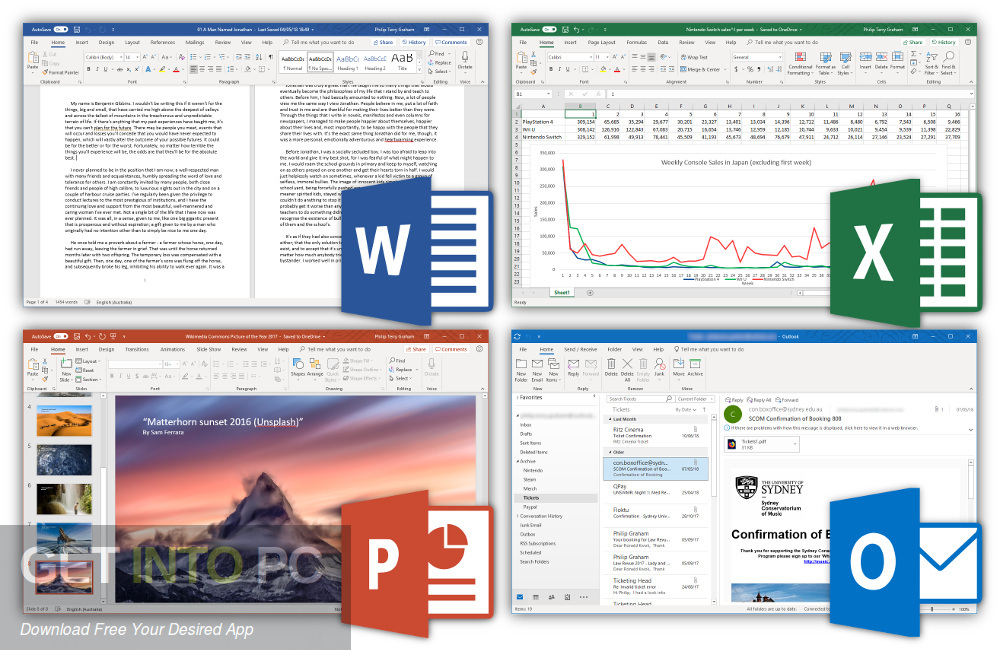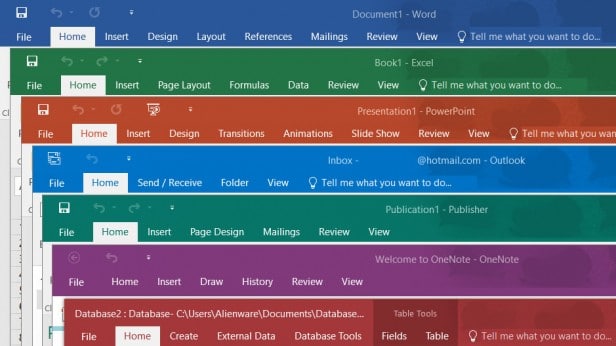Office 365 is a subscription that comes with premium apps like Word, Excel, PowerPoint, OneNote, Outlook, Publisher, and Access (Publisher and Access available on PC only). The apps can be installed on multiple devices, including PCs, Macs, iPads, iPhones, Android tablets, and Android phones. Office 365 also comes with services like 1TB of OneDrive storage, 60 Skype minutes per month, and Microsoft chat and phone support. With a subscription, you get the latest versions of the apps and automatically receive updates when they happen.
This site uses cookies for analytics, personalized content and ads. By continuing to browse this site, you agree to this use. Starting with the 16.17 release in September 2018, these release notes also apply to Office 2019 for Mac, which is a version of Office for Mac that’s available as a one-time purchase from a retail store or through a volume licensing agreement. Sep 24, 2018 Today, we are announcing the general availability of Office 2019 for Windows and Mac. Office 2019 is the next on-premises version of Word, Excel, PowerPoint, Outlook, Project, Visio, Access, and Publisher. Office 365 ProPlus, the cloud-connected version of Office, delivers the most productive.
First, check to see if you are eligible for Office 365 Education, which is free for qualified teachers and students, and includes Word, Excel, PowerPoint, OneNote, Microsoft Teams, and other classroom tools from Microsoft. Office 365 Education is not a trial, and is available for free to accredited academic institutions who have successfully signed up for this program.
To see if your computer, mobile device, and/or browser can run Office, please visit the Office system requirements page.
Powerpoint 2016 For Mac Save As Movie
Internet access is required to install and activate Office, but not to use Office applications such as Word, Excel, and PowerPoint once you have these fully installed on your computer.
Once you have purchased Office, you can install it from the Services & subscriptions section of your Microsoft Account page.

People using Office 365, Office 2019, Office 2016, 2013, 2010, and 2007 as well as Office for Mac 2011 and 2008 will be able to open and view your documents, but those on earlier versions may need to install a compatibility pack.
Yes, the Office 365 Training Center has quick start guides, cheat sheets, tips and tricks, and training courses on how you can make the best use of Office.
Office 365 FAQ with chat link: https://products.office.com/microsoft-office-for-home-and-school-faq
ignite 2018
The preview period is over. Microsoft is making Office 2019 generally available starting today, September 24, for Windows and Mac.
Office 2019 is the successor to Office 2016. It's the 'perpetual,' on-premises version of Microsoft's Office suite and includes Word, Excel, PowerPoint, Outlook, Project, Visio, Access and Publisher. Microsoft released a preview of these applications to commercial customers in April 2018.
Excel 2019 For Mac
Also: Windows 10 how-to: Ed Bott's free tech support guide
As Microsoft officials have said previously, the Office 2019 feature list is a subset of what Office 365 ProPlus subscribers get. The 2019 release adds some of the key Office features that Microsoft already has rolled out to its Office 365 subscribers over the past three years.
The Office 2019 release won't get feature updates; it will get security updates and fixes only.With Office 2019, users will get Morph and Zoom for PowerPoint; new
Also: Microsoft: 5 tips for developers to reduce malware TechRepublic

Just a reminder: Office 2019 will only run on Windows 10, not Windows 7/8.1 and in the case of the server apps, Windows Server 2019. The Office 2019 client apps also will be released as Click-to-Run only. Microsoft won't be providing a MSI option for Office 2019 clients, but will continue to do so for Office Server products.
Update (September 24): Microsoft officials also confirmed today that there will be another on-premises, perpetual version of both its Office clients and servers after Office 2019. (Before today, all we could get was a 'maybe.') Microsoft isn't providing any timing guidelines as to when the successor to Office 2019 client and server will be available, but they are definitely on the roadmap, as a result of customer feedback.
MORE FROM IGNITE:What's next for Teams | Microsoft staggers rollout of Surface Hub 2| Microsoft to unify search across Windows 10, Office 365 and Bing with Microsoft Search | Microsoft readies previews of Azure Digital Twins, Azure Sphere secure-edge service
Microsoft recently relented on some of its previously stated support cut-off dates for Office on various variants of Windows. Office 2016 will continue to work with Office 365 back-end services through October 2023 now. In addition, Microsoft is going to provide five years of mainstream support and approximately two years of extended support so as to align with the extended-support end date for Office 2016 (which is Oct. 14, 2025).
Previous and related coverage:
Microsoft's much-hyped free upgrade offer for Windows 10 ended in 2016, right? Not exactly. The GWX tool may be gone, but all the other upgrade tools still work. The end result is an apparently valid digital license, and there's no evidence that the free upgrades will end any time soon.
Here's everything you need to know before you repair, reinstall, or upgrade Windows 10, including details about activation and product keys.
You've just upgraded to the most recent version of Windows 10. Before you get back to work, use this checklist to ensure that your privacy and security settings are correct and that you've cut annoyances to a bare minimum.
Powerpoint 2019 For Mac
You've got a new PC running Windows 10 Home. You want to upgrade to Windows 10 Pro. Here's how to get that upgrade for free. All you need is a Pro/Ultimate product key from an older version of Windows.
Related stories:
